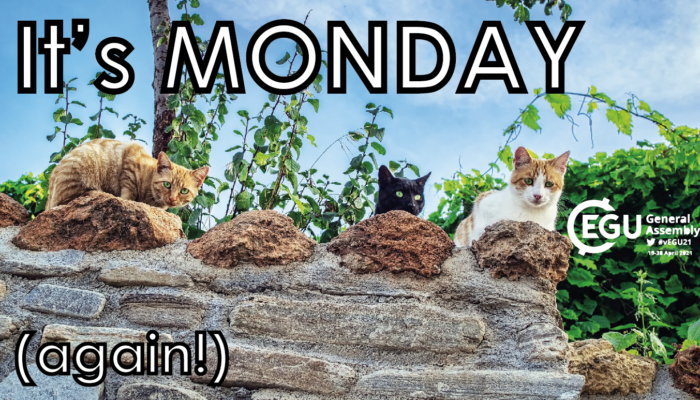After some technical teething problems on Monday morning (honestly is it even an online conference without technical difficulities?) we’re extra eager to get stuck into some of the amazing science being presented today. As with all the sessions so far, most of the presenters have uploaded display materials to accompany their presentations which range from posters to full length recorded talks, so ...[Read More]
Seismology
The Seismica Initiative: towards a community-driven, Diamond Open Access journal for seismological research
It all started with a tweet from @NatureNews (the news team of Springer Nature): In general, academics welcome Open Access (OA) initiatives; however, this particular tweet has been met with stiff criticism. Unethical profit-seeking, financial gatekeeping, academic elitism, and straining scientific budgets were commonly raised concerns among the many retweets and replies. Unfortunately, these conce ...[Read More]
Climate: Past, Present & Future
How humans are influencing climate change and its significance in defining a new geological epoch: the Anthropocene
The Anthropocene Working Group (AWG) is the body tasked to propose a formal definition for the Anthropocene as a geological time unit. Join us at the EGU2021 General Assembly on Wednesday 28th April at 14:15-15:00 CEST for a series of presentations on the Anthropocene in session SSP2.6. The Anthropocene concept Geologists cope with the enormity of 4.5 billion years of Earth history by divid ...[Read More]
Geochemistry, Mineralogy, Petrology & Volcanology
vEGU21: Monday GMPV highlights
Welcome to vEGU21 week 2! If you are a GMPVer, this will be a solid and interesting week of presentations. Each presenter will talk for two minutes, then there will be breakout text chats, and simultaneous live video chats. So be ready to be thinking about 7 things at once… No idea where to go or what to do? Try out this itinerary (all times in CEST): After a hearty breakfast of whatever you ...[Read More]
Geodynamics
The Sassy Scientist – Classic Conference
Maddie is in the final stretch of her PhD track. Whilst finalizing the last couple of figures and jotting down the last couple of paragraphs for her thesis, she checks the institutional web pages for job opportunities ferociously. Coming up blank, she mutters: How important is a social network for obtaining a future job in academia? Dear Maddie, It is absolutely paramount. You don’t seriously thin ...[Read More]
Cryospheric Sciences
Introducing TJ Young, our new early-career representative for the cryo-division of the EGU!
Every two years, the Cryospheric Sciences division of the European Geophysical Union (EGU) elects a new representative for its early-career scientists. Starting in April 2021, Tun Jan (TJ) Young will take over the role from Jenny Turton, who is the outgoing representative. TJ shares a bit about himself and how his previous leadership experience aligns with the goals of EGU’s early career scientist ...[Read More]
Geochemistry, Mineralogy, Petrology & Volcanology
Geology Bites. – Podcast conversations about Geology
Podcast conversations about geology with researchers making key contributions to our understanding of the Earth and the Solar System Since you are reading an EGU Blog, you must already know how remarkable the field of geology is. The subject matter stretches the imagination – with its almost cosmological timescales, processes operating on scales from the atomic to the continental, and unima ...[Read More]
Solar-Terrestrial Sciences
First year of Energetic Particle Measurements with EPD aboard Solar Orbiter
One year ago, the Energetic Particle Detector (EPD) aboard the European Space Agency’s (ESA’s) Sun observing spacecraft Solar Orbiter (SolO) was launched starting a long-awaited journey. SolO (Figure 1) will provide both in-situ and remote sensing measurements in the inner Heliosphere and EPD will contribute particularly to the latter ones. EPD consists of four sensors that share the s ...[Read More]
Biogeosciences
Welcome to the vEGU21: BG events not miss
With the vEGU21 now officially started, apart from many interesting scientific sessions kicking off next Monday (26th April), the BG Division has prepared for you several events where you will have the opportunity to learn more about the Division, get to know who we are and what we do, network with the community and colleagues, and much more… We have picked a few highlights for you not to mi ...[Read More]
Solar-Terrestrial Sciences
Meet the Experts: The future of solar terrestrial research
Every year at the EGU General Assembly renowned experts from the field of Solar-Terrestrial research get together to give inspirational talks and to meet with early career scientists. This year’s “Meet the Experts” session is focusing on the future of solar terrestrial research. To think of the future, we first have a look at the past, and more precisely on the knowledge acquired with over half a ...[Read More]









